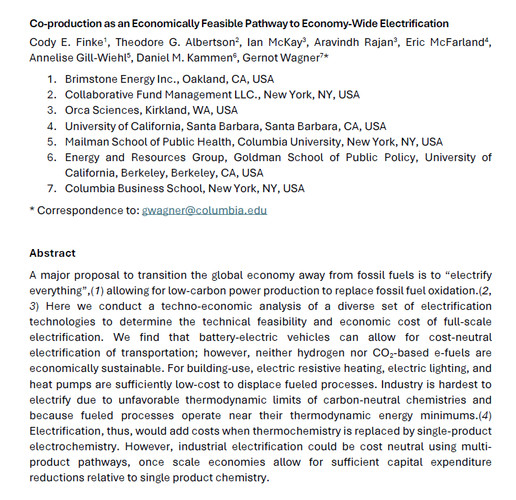Why Oil Giants Figured Out Carbon Costs First
Inaugural Risky Climate column

Read all Risky Climate columns at Bloomberg Green.
When in doubt, look to those who stand to gain the most from understanding the facts. That mantra works well in financial markets. It also holds for climate science. The oil industry famously knew about the effects of looming climate change as far back as the late 1970s. Of course, Exxon was then actively pretending not to understand those facts. But the oil giant knew, even in the early 1990s, what it would take to reverse our calamitous path—calculating carbon prices closer in line with today’s state of knowledge than some of the best climate economists working at the time.
Oil companies are pretty good at looking ahead. Shell, over 20 years ago, envisioned scenarios in 2020 of youth-led “direct-action campaigns against [fossil energy] companies,” all but predicting Greta Thunberg before her birth. But it was Exxon—in this case, Exxon’s Canadian subsidiary, Imperial Oil—that produced a bold sketch of what it would take to really slow down global warming.
If there’s a holy grail of climate economic analysis—a single number that attempts to summarize the immense complexities of climate change—it’s the “social cost of carbon.” At least in theory, the SCC captures the damage caused by unmitigated climate change and balances it with what is necessary to rein in excess emissions.
The principle is simple. Economists trace it back to Arthur Pigou, who in 1920 wrote about the problem of rabbits overrunning land shared with others. If I were to add one more rabbit to the communal meadow, I get all the benefits—another rabbit for me to shoot—but everyone else pays for the costs of increased meadow grazing. The solution? Charge me a fee for every one of my rabbits, equal to the difference between my personal costs and the larger ones imposed on society. That principle has since become known as Pigouvian taxation. The SCC captures this idea for climate change.
Economists have labored for decades to try to make sense of it all. Yale economist Bill Nordhaus shared the 2018 Nobel Prize for economics, in part for having developed the first and, to date, the most prominent model calculating the SCC. His seminal paper introducing the Dynamic Integrated Climate-Economy, or DICE model, came out in 1992. DICE famously captures the entire climate problem in 20 main equations. A popular version of it runs in Excel.
Nordhaus’s first answer to the all-important question of how much each ton of carbon dioxide emitted costs society—and therefore, what it should cost—is around $2.50 in today’s dollars. So, by the logic of the SCC, a $2.50 tax in 1992 would have maximized societal well-being. That price would have balanced the benefits of each ton of CO₂ emissions (keeping lights on at night, beers cool in the summer, and homes warm in the winter) with the costs of unmitigated climate change, as well as the costs of transitioning from the current fossil-fueled economy to a low-carbon one.
By today’s standards, $2.50 is laughably low. In fact, Nordhaus’s preferred numbers—what DICE spits out as “optimal”—have since increased to around $40. That’s the starting point for the bipartisan Climate Leadership Council’s plan to tax CO₂ across the U.S. economy. Among the plan’s supporters? None other than Exxon, together with several other oil conglomerates.
Has Exxon seen the light? Is $40 the magic number? After all, that figure is roughly in line with what the Obama administration found to be its preferred SCC less than five years ago, in part by relying on Nordhaus’s DICE model.
Not so fast.
For one thing, Exxon itself knew better a year before Nordhaus first published DICE. In April 1991, Imperial Oil, based in Calgary, Alberta, and controlled by ExxonMobil, issued an internal “Discussion Paper on Global Warming Response Option” with a preface signed by its then-chairman and -chief executive officer, estimating the need for a price of around $75 per ton of CO₂ (in today’s U.S. dollars) to stabilize Canada’s carbon emissions. That is 30 times more than what Nordhaus proposed as the “optimal” price a year later.
It’s fair to say that any economy with a CO₂ price of $75 beginning in the early 1990s would look very different today. Emissions would have decreased significantly; at the very least, they would not have increased by as much over the past quarter-century. In fact, Sweden did pass a carbon tax of around $30 in 1991, now well above $100. Transport emissions alone decreased by more than 10%, largely due to the tax.
To be clear, the Exxon report was a very different document from Nordhaus’s DICE model. For one thing, it didn’t calculate the SCC. Exxon’s $75 was simply the number calculated to stabilize Canada’s CO₂ emissions. That’s far from a trajectory that balances global benefits of emissions reductions with its costs.
Climate change is immensely complex, causing both more intense floods and droughts and temperatures that are much too high and, on occasion, even too low. The economics profession has made important headway on how to calculate climate damages, but there’s still a long way to go.
Almost every time someone tinkers with DICE to change one or two key inputs, SCC figures go up. If you include the fact that climate damages hit growth rates, not levels of gross domestic product, prices increase from $40 to $200 or more. If you look to a different model and assess country-level damages, the average might surpass $400 per ton. Now go to a different model altogether and look to financial economics for insights on how to deal with climate risk; my co-authors, Kent Daniel and Bob Litterman, and I were unable to get the price below $100.
The differences among these estimates matter, a lot.
If $40 were the right number, many climate policies currently on the books would be roughly in the correct ballpark. California’s cap-and-trade system, which sets an economy-wide limit on around 85% of its greenhouse-gas emissions and lets companies trade emissions allowances with prices of around $15 per ton, isn’t quite there. But with a bit of tinkering on the margins, it, too, could incorporate the full climate cost of each ton of CO₂. California’s low-carbon fuels standard to reduce the carbon intensity of transport fuels with prices of around $200 would be too ambitious.
If $400 were the right number, though, even California’s low-carbon fuels standard would look much less ambitious. Few policies come close to getting it right. Sweden’s famously high carbon tax of over $100, the world’s highest, wouldn’t be enough.
Of course, saying we need a high carbon price won’t make it so. Merely calculating the right number in an economic model is one thing. The real challenge is mustering the political will to actually impose a serious price on carbon. A handful of jurisdictions have done it. The big emitters have not. Nobody knows what could finally push things over the top. Shell’s scenario of a youth-led uprising may well be the most powerful force yet. The big question is what that movement should push for.
Five years ago, I would have concluded that a $40-per-ton price on CO₂ would surely be better than none. The Exxon-supported $40 might have looked like a middle-of-the-road estimate in light of both Nobel laureate Nordhaus and President Obama landing in the same ballpark. My 2015 book, Climate Shock, co-authored with the late, great Martin Weitzman, says as much.
By now, climate economics—in good part, thanks to Weitzman’s insights—knows $40 to be woefully inadequate for the task at hand. Exxon Mobil Corp. knows as much, too. While $40 is indeed greater than $0, the big question is what to give up merely to get to that price. Trading away U.S. Clean Air Act authority to regulate CO₂, in part written into the 1970 law by economist Bill Nordhaus’s brother Bob, would surely be a step too far.
A baby step is for economists to stop talking about $40 as if it were a sensible starting point. It is not. Try $100 or more instead. Why anchor our carbon pricing conversations to what Exxon wants—and knows to be much too low?
Gernot Wagner writes the Risky Climate column for Bloomberg Green. He teaches at New York University and is a co-author of Climate Shock. Follow him on Twitter: @GernotWagner. This column was first published by Bloomberg Green on January 22, 2020, and does not necessarily reflect the opinion of Bloomberg LP and its owners.

